|
|
Post by dannyi on Jun 23, 2010 14:02:59 GMT -6
Very Nice Work ;D ;D Whwere did you get the brick walls from? Did you cast them or get them somewhere?? Thanks...............Chief ......thanks Chief.....the wall are 3/16 foam board from Hobby Lobby. I removed the paper backing so I could scribe the foam. 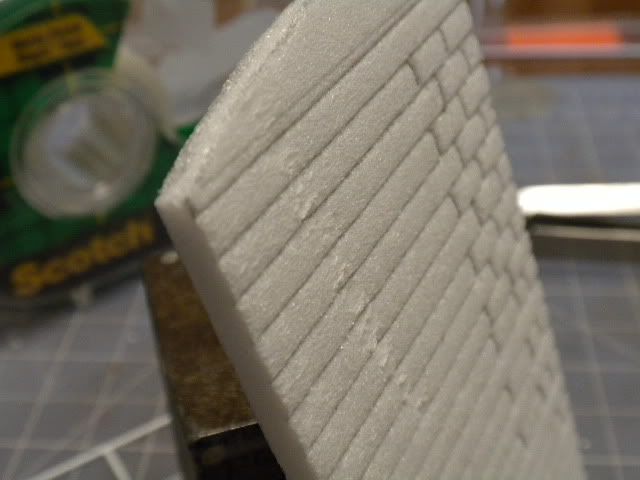 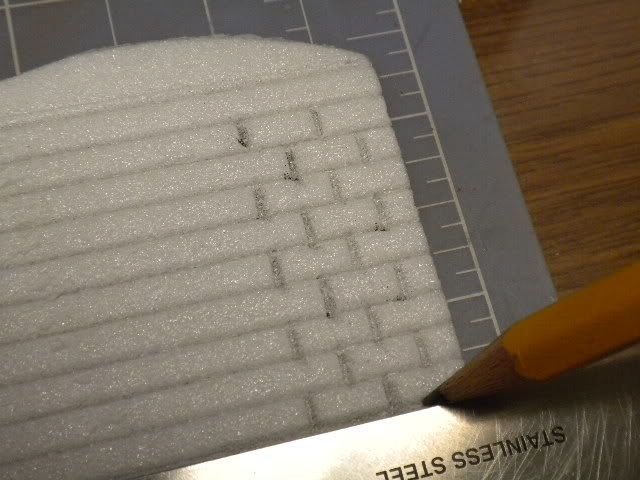 ..this process is a bit time consuming but the results are worth it. Plan on doing a short tutorial here in case anyone is interested in trying this.... |
|
|
|
Post by chiefsspeedshop on Jun 23, 2010 17:22:16 GMT -6
That would be GREAT if you did that, I am very interested in seeing how this is done,also what did you make the doors from and hardware on them?? ???Thanks.........................Chief
|
|
|
|
Post by mastermodeler on Jun 23, 2010 17:58:39 GMT -6
..thanks Greg and Alex, I appreciate it!.....Alex, glad you had a chance to visit my web site. I've got new products in the works too, hopefully will have them available soon.... I've got it bookmarked in my favorites under model suppliers. Alex |
|
|
|
Post by geezerman on Jun 24, 2010 3:48:09 GMT -6
Major NICE.
Brick walls are beautifully done !!!
great work!
|
|
|
|
Post by olskoolrodder on Jun 24, 2010 9:12:40 GMT -6
That's looking flat awesome!!! ;D ;D ;D
|
|
|
|
Post by dannyi on Jun 24, 2010 11:03:26 GMT -6
..thanks fellas for the kind remarks! ..Chief, the door are made of basswod. I had a solid piece that I cut all the boards from. The hardware is from Ozark Miniatures. www.ozarkminiatures.com/ The only thing I made for the doors were a set of hinges for the little service door. Those were made of styrene rod. |
|
|
|
Post by dannyi on Jun 24, 2010 11:22:48 GMT -6
..the wall are made from 3/16" foam board. It's commonly sold at craft stores like Hobby Lobby. It usually come in a 30"x20" piece for under $2.00. The foam is sandwiched between paper backing. This paper has to be removed, it doesn't scribe very well at all. You want to use just the foam portion. Here's a sample piece with the backing removed...  ..you can see in this picture that the foam has a porous texture that give the bricks that rough, real look..... ...next I'll post the painting process.....hopefully later today..... |
|
|
|
Post by chiefsspeedshop on Jun 24, 2010 11:57:01 GMT -6
THANKS a bunch for the link ;D Now I am off to Hobby Lobby for the foam board and start on this to see fi I can make something similar to your AMAZING WORK,I can't wait for the painting tips.   What color are your using on your bricks and mortar cracks?? Thanks again........................Chief |
|
|
|
Post by dannyi on Jun 24, 2010 16:33:57 GMT -6
..I want to take a moment to thank philbass (Eric) for his tutorial on his brick work with foam. I just noticed today that he is a member here. His work is what inspired me to try this.
...thanks Eric, you've started a brick work craze!!
|
|
|
|
Post by dannyi on Jun 24, 2010 16:51:00 GMT -6
..after the backing was removed (start at one corner and peel back) started to scribe the brick. To do this I had a styrene sheet of bricks from Evergreen Scale Models. This was used as a template. Laid along the edge I marked the mortar lines diagonally and vertically. If you don't have a form of template or guide, just make one on a sheet of paper using a scale 8" x 3-1/2" scale pattern. ..once the line marks were done I scribe the foam with a straight edge and a pencil. Using a pencil made the mortar width about right and easier to see where you've been. When I had all the brick done, I sanded the entire piece with 220 grit sand paper. This flattened the face of the bricks for a more realistic look. 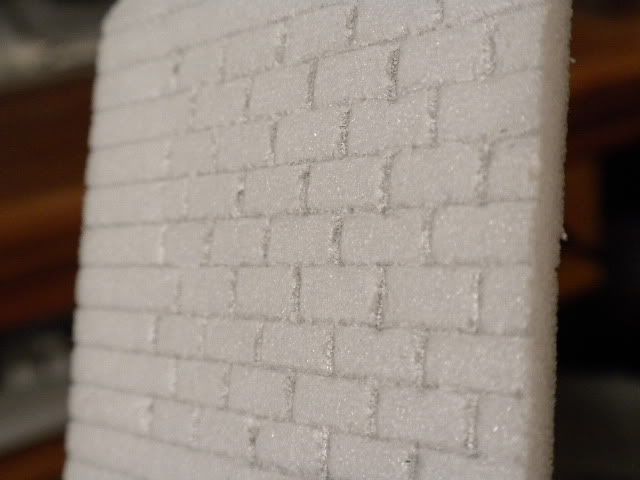 |
|
|
|
Post by dannyi on Jun 24, 2010 16:54:15 GMT -6
..I used some white craft paint to prime the brick.....all paints are acrylic...... 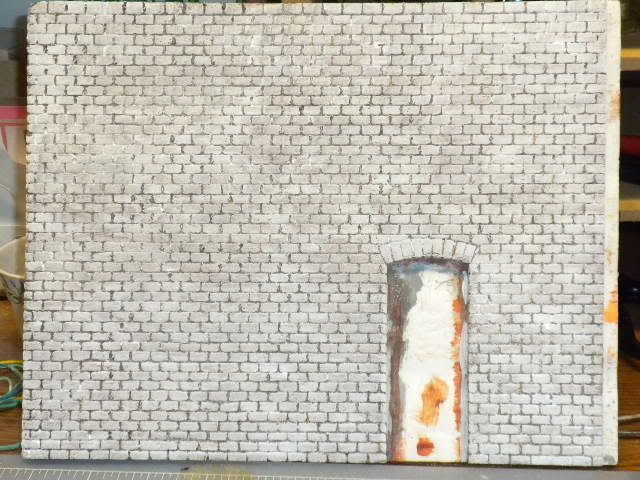 ..for the common brick color I used burnt sienna from Daler & Rowney. Other burnt sienns's I have by different companies were too dark. I thinned the paint by 2 to 1, .... 2 parts paint to 1 part water. You can see in the upper left hand corner that the paint wasn't thinned enough to start with.  |
|
|
|
Post by dannyi on Jun 24, 2010 16:59:53 GMT -6
..after the first coat dried I put on a second coat with the same 2 to 1 ratio. Only this time I did a random brushing to get varing shades. 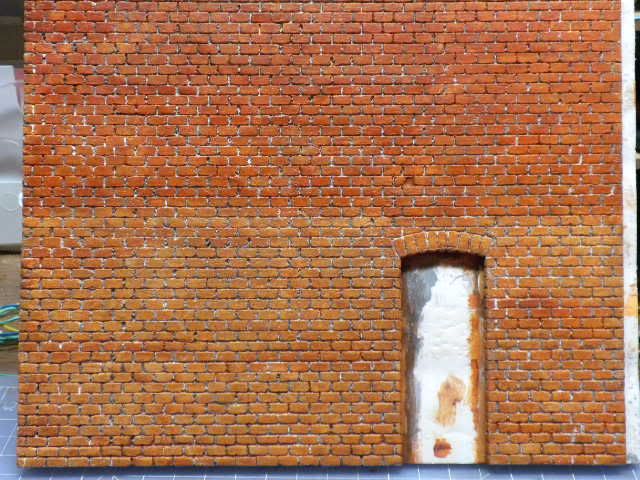 ..here's the completed second coat. When this dries I'll start mixing paint colors to get different colored bricks. 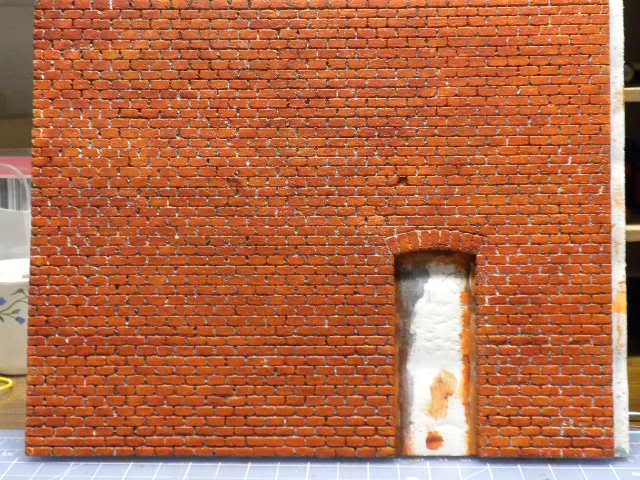 |
|
|
|
Post by dannyi on Jun 24, 2010 17:03:00 GMT -6
|
|
|
|
Post by dannyi on Jun 24, 2010 17:04:37 GMT -6
...here's the finished wall...it appears a bit darker then what it really is. My lighting not the greatest. 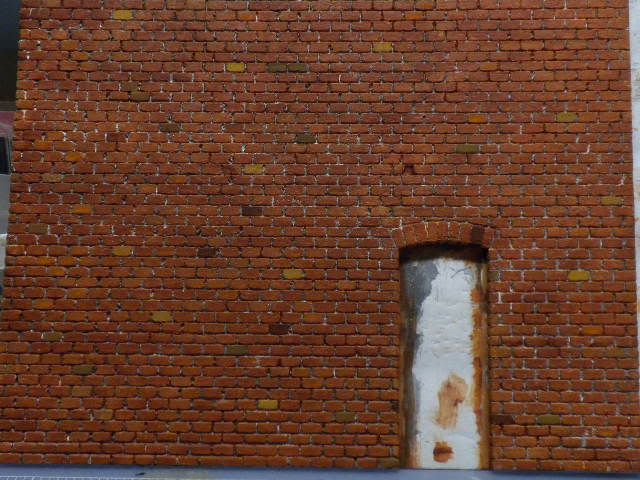 after this dries good I will add the plaster of Paris for the mortar, then the ink wash to give it that time worn look......... |
|
|
|
Post by dannyi on Jun 24, 2010 17:06:45 GMT -6
The next step in the process after the bricks were painted and dry is to add the mortar. Philbass' used dry pigment in his technique but I'm using plaster of Paris. Not sure if the properties are the same but it seem to accomplish the same affect. Using a stiff brush, I worked the plaster into all the mortar lines. 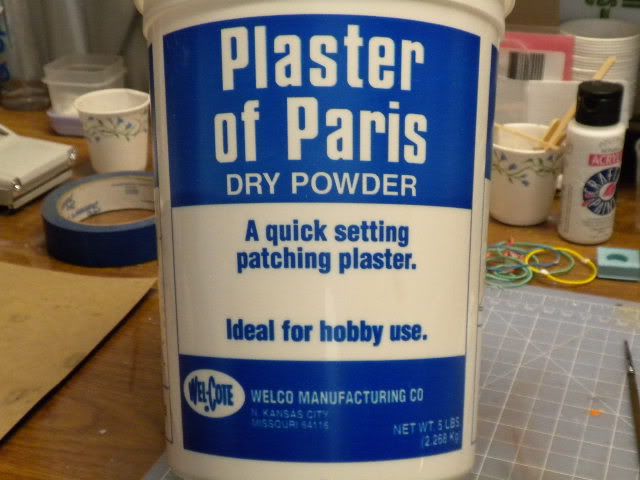  .....after this is done you can see it left a white powder coating on the bricks. I removed this with a lightly dampened cloth....... 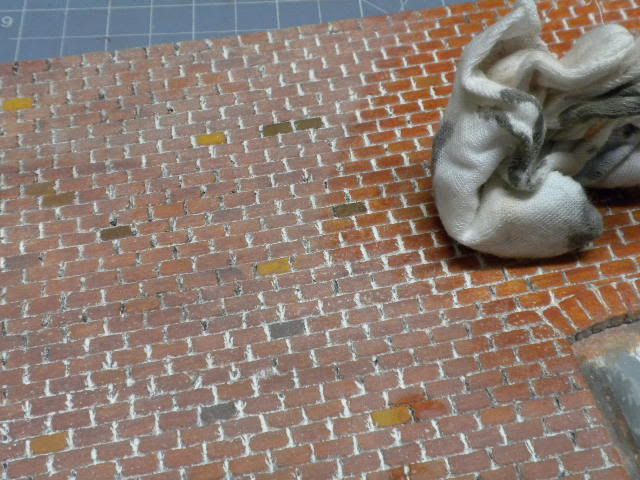 |
|